

David Lubar interview
By Scott Stilphen
(2003)
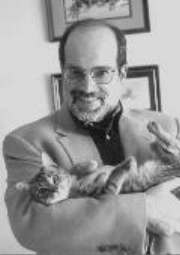
Acclaimed programmer and author David R. Lubar talks about how he got started with game design, covering some of the nearly 40 (!) titles for 8 different systems he's worked on, and what he's been up to lately. Is he still writing games, or is he solely writing books? Read on...
Q: What’s your educational/technical background?
David Lubar: I don't have any technical background. I have a BA in philosophy. Normally, this wouldn't be much of a help in programming. In my case, I got lucky. Instead of concentrating on boring stuff like 18th century philosophers, or the history of existentialism, I focused on logic.
Q: You did a couple Apple II games for Creative Computing (Battlesight, Bumper Blocks, and Obstacle Course), eventually becoming Associate Editor and writing articles and reviews, and interviewing people. Were those the first game programming you had done?
David Lubar: Yeah. I started out with BASIC, learning it before I got my Apple. I wrote a couple games on paper, but they were pretty simple. Once I had my hands on an actual computer, I got a bit more adventurous. I switched to assembly language once someone was kind enough to get me started.
Q: How did your involvement with programming for the VCS come about?
David Lubar: Larry Miller at Sirius Software was putting together a 2600 group. He called Mark Pelczarski at Penguin Software (later renamed Polarware) to see if he was interested. Mark gave Larry my name.
Q: When did you start/stop working for Sirius (or 20th Century Fox)? How was it that both Spectravideo (Spectravision) and 20th Century Fox both released games by Sirius under their respective labels?
David Lubar: I think it was in 1982. Sirius originally planned to publish any 2600 games that were developed by our group (there were four of us working under Larry Miller. We each pretty much did our own games, though we helped each other out if someone was stuck on a coding issue or wanted some game play feedback. The others were Mark Turmell, Grady Ward, and Ed Hodap). For business reasons, Sirius ended up making a deal with Fox. When Fox decided they didn't want to publish Nexar or Bumper Bash, Sirius found another publisher.
Q: What was the idea/motivation and related memories behind each of these early titles:
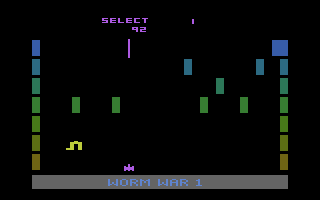 Worm War I – Besides Howard Warshaw’s Yars’ Revenge, I think this was the only other (VCS) game to use actual program code for graphics. Very ingenious! I heard this was your first
VCS game as
well. The title begs the question – was Worm War II planned?
Worm War I – Besides Howard Warshaw’s Yars’ Revenge, I think this was the only other (VCS) game to use actual program code for graphics. Very ingenious! I heard this was your first
VCS game as
well. The title begs the question – was Worm War II planned?
David Lubar: I'm really glad you asked about Worm War I, because it was inspired by some very cool things that will only be appreciated by a dedicated group of 2600 fans. Let's start with the black lines. As you know, every time an object (player register) is
positioned using the fine-positioning hardware, the 2600 produces a short black line on the left side of the screen. Programmers have various options for handling this. They can ignore the issue, allowing the black lines to jump around. Or they can hit that register on every single scan line, so there's a black strip down the side of the screen. I came up with a third solution. I didn't use fine positioning at all (the coarse positioning places an object every 8
pixels. Fine positioning handles the exact location within that block). I realized that if I used an object that I could move through animation, I wouldn't need to use fine positioning. That's how I came up with worms. The animation sequence of bunching up also gives them the illusion of moving. So the whole game was spawned by a desire to avoid dealing with the black lines (note that even if I used fin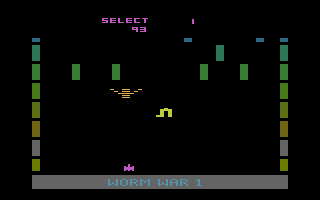 e
positioning, you'd only notice the lines during a screen flash since the background in the game is black. But that wasn't the point. The point was I was determined to find a way around the problem). I think I managed to put a few other nice touches in the game, including a two-player cooperative mode and a pause feature (though it's possible I didn't actually put in that feature until a later game). For a first game, it wasn't bad. No sequel was planned.
e
positioning, you'd only notice the lines during a screen flash since the background in the game is black. But that wasn't the point. The point was I was determined to find a way around the problem). I think I managed to put a few other nice touches in the game, including a two-player cooperative mode and a pause feature (though it's possible I didn't actually put in that feature until a later game). For a first game, it wasn't bad. No sequel was planned.
Q: The little animation when shooting a worm was neat. It looks like a stick-figure which quickly slides down (into the ground) - was that intentional?
David Lubar: Thanks. I think I was just trying to get the explosion off the screen in a cute way, but I'm happy with any positive impression it left.
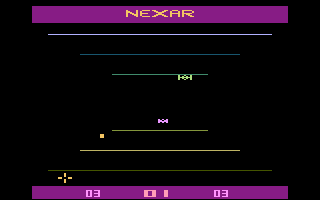 Q: The Challenge of NEXAR – I’ve heard that Tempest was the inspiration for it. Is this true?
Q: The Challenge of NEXAR – I’ve heard that Tempest was the inspiration for it. Is this true?
David Lubar: Like a lot of my stuff, it wasn't born from any methodical plan. I was playing around with graphics on the 2600, trying to do a version of Nasir Gabelli's Space Eggs, a game Sirius published for the Apple. The game starts each round with a rectangle that grows to fill the screen - easy on the Apple, but slightly more challenging on the 2600. While I was fooling around with this, I came up with the lines. As soon as I saw the effect, I knew I had a cool basis for a game. I'm sure Tempest provided some of the inspiration at that point, though I think the roots can be traced farther back to any game where objects zoom toward you from far away. I guess Star Raiders would be as good a grandparent as any.
Q: I noticed that the Nexar manual refers to “SPECTRA WARRIORS” - did you write the manuals for your games
David Lubar: No. I had nothing to do with the manuals.
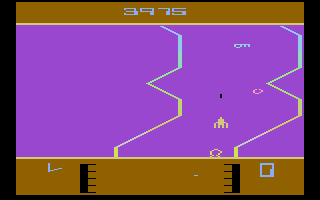
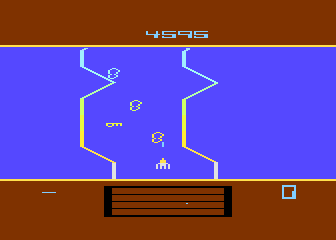
(LEFT) VCS/2600 Fantastic Voyage; (RIGHT) 400/800 Fantastic Voyage
Q: Fantastic Voyage – Obviously based on the film :) I've recently learned there was an arcade game by Taito called Bio Attack that is very similar to your Fantastic Voyage games. The info onscreen states the game was licensed by Fox Video Games, Inc. I can only surmise the name was changed because they couldn't obtain the rights to use it. Were you aware of this game?
David Lubar: I did not know any of this. Thank you for letting me know. I think the similarity to my game is almost inevitable if someone is trying to make a game set in the circulatory system. Still, it definitely seemed as if my game could have been a source of inspiration.
Q: The 400/800 Fantastic Voyage manual mentions there were versions for the Commodore VIC-20 and 64, but other than being seen at some point, it appears they weren't released, but as far as I know, no prototypes have been found.
There was also an arcade game called Fantastic Voyage by Universal, dated 1982. As far as I know, this game was never released, but a flyer exists. Judging from the artwork and screenshots, it's seems apparent this was based on the movie as well.
David Lubar: Fox wanted us to write games that could be marked with movie titles from their library. When I saw the available list, I leaped on this one. I grew up reading Asimov's books, and I knew the movie.
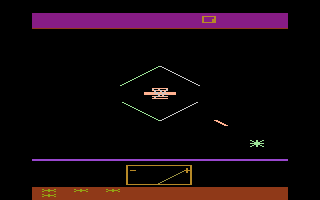
Q: SpaceMaster X-7 – I’ve never seen the movie of the same name, but the description of it doesn’t sound like the game. Why did Fox simply take an original game of yours and slap that title on it (and of all movies, an obscure 1958 flick)? Any involvement with its port to the Atari 800 (under the title Alpha Shield)?
David Lubar: You'd have to ask Fox. I never saw the movie either! Never even heard of it until I learned that it was going to be the title for the game. I wasn't involved with the Atari 800 port, though I got a kick out of seeing the game make a brief appearance in Revenge of the Nerds.
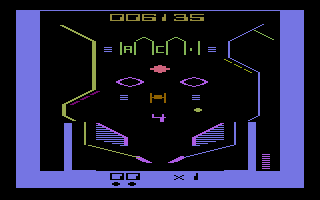 Q: Bumper Bash – excellent pinball simulation (only 1 of 3 for the
VCS). Did you know it’s also
one of the most rare/valuable and sought-after carts?
Q: Bumper Bash – excellent pinball simulation (only 1 of 3 for the
VCS). Did you know it’s also
one of the most rare/valuable and sought-after carts?
David Lubar: Thanks. I'm pretty proud of that one. I spent my formative years pretty much doing nothing except reading and playing pinball (that was my real major in
college). So I approached the design with a true love of the subject. I even added code so the ball would come to a dead stop when you trapped it on a flipper. My only regret is that I didn't allow a joystick option. It's fine using paddle buttons for the flippers, but since you have to push both buttons to launch the ball (and, if I remember correctly, the two buttons represent left and right on a joystick), there's no way to launch the ball with a joystick.
As far as I remember, it was only released in a PAL version. I think I have an EPROM on a prototype board somewhere. Sounds like I should dig it out.
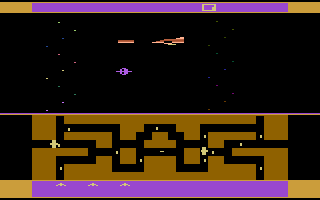
Q: Flash Gordon – Another movie-based title...
David Lubar: Like Fantastic Voyage, this was inspired by the availability of the title. Other than that, I can't remember much about it except that the "Spider City" part of the name came from the fact that Sacramento was called that.
Q: Many of your earlier games share a common ”vector look” to them. Was this a conscious effort by you, or just a reflection of your programming style?
David Lubar: I was a big-time fan of vector games. I poured a lot of quarters into an early vector game with the sadly-scatological name of Eliminator. I bought a Vectrex just for Space Wars. I think the vector look came in part from that and in part from my obsession with trying to make machines do things they weren't necessarily designed to do, though I should note that originality or novelty for its own sake doesn't guarantee a good game. Whatever you do, it has to be fun. That's the first rule. It doesn't matter how cool the code is, or how much you push the machine. If the game sucks, you've failed.
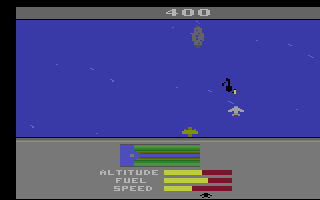 Q: When did you start with Imagineering, or were you a freelance programmer for them? I understand you did both My Golf (HES) and River Raid II
(Activision) there? The River Raid II manual states it was designed by Dan Kitchen. How was it you weren’t credited with programming it? Did Carol Shaw have any input with the sequel?
Q: When did you start with Imagineering, or were you a freelance programmer for them? I understand you did both My Golf (HES) and River Raid II
(Activision) there? The River Raid II manual states it was designed by Dan Kitchen. How was it you weren’t credited with programming it? Did Carol Shaw have any input with the sequel?
David Lubar: Okay, here's the time flow - I started at Sirius in 1980, left there for Activision in 1982, and got laid off in 1984, but continued to freelance for Activision. Then I freelanced for some other places, including Broderbund, Origin Systems, and Imagineering. At some point, Imagineering merged with
Absolute (they weren't really different companies. In the beginning, Imagineering was the design house and Absolute was the publisher, but they were both basically the same people). Around 1992, I switched from freelancer to employee for Absolute. I lost that job in 1995 when Absolute went under. By then, I was ready for a break. I spent some time writing, which is something I'd done on-and-off since the late seventies.
As far as credit for River Raid II, you'd have to ask Dan Kitchen why my name isn't in the manual. Carol Shaw didn't have any input in the sequel, though I certainly would have welcomed any suggestions from her.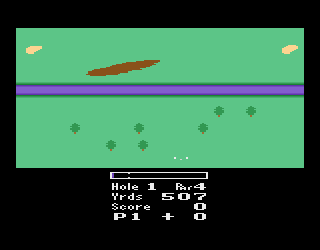
Q: My Golf – pretty amazing golf simulator! Was this an attempt to do a game like Access Software’s (86) Leaderboard?
David Lubar: In truth, I'm not sure I ever saw Leaderboard. Garry Kitchen sketched out the basic concept and let me do my thing. In my own biased and ornery opinion, the more I'm left alone, the better the game comes out. I think you can see this in Frogger 2, where I had free reign, and with Home Alone. Compare that with Swamp Thing, or the nightmare Ren and Stimpy project (I don't remember the final title… I'm not even sure if it was released), where I had producers crawling all over things like maggots on dead meat. It had a world set on a space ship, another in medieval times (Ren dressed as Robin Hood), and probably some other worlds I can't remember. Frank Lam did the art. I didn't feel like listing it on my site.
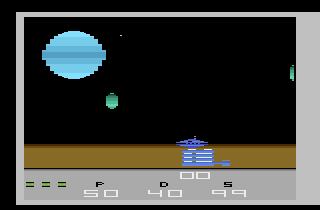
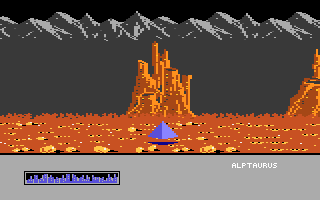
(LEFT) VCS/2600 Sentinel; (RIGHT) 7800 Sentinel
Q: Sentinel – You worked on both the VCS/2600 and 7800 versions. It’s very unusual to see the same programmer do a game for multiple platforms. Was that something you wanted to do?
David Lubar: I did those as a contractor for Imagineering. It was more a matter of taking any work that came along. The freelance life can get precarious. Sometimes, there's lot of work being offered. Sometimes, you contemplate the pros and cons of a career selling your own blood
My strongest memory of the project was that the development system ran on an Amiga. The earliest development systems I used ran on an Apple II. I even did my C-64 and Atari 800 games on an Apple II. Eventually, everything switched over to PCs.
Q: Was Sentinel the only 7800 game you did?
David Lubar: I was working at one point on a port of a 2600 skateboarding game (not the version David Crane did for Absolute – Super Skateboardin’). I think the project got killed, but I can't remember for sure.
Q: Did any of your games have early or tentative titles? Any VCS games you worked on that were never finished, or never released?
David Lubar: I did a M*A*S*H game at Sirius. I wasn't told that Fox was also working on one in-house at the same time. Mine never got released. I may have an EPROM somewhere. I probably had other stuff that was never finished, but it all tends to blend together in my mind.
I also wrote an Atari 800 game while I was at Sirius that never got published. It was called Cineman, and had a stunt bird performing in movies.
Q: Any of your games contain Easter eggs or hidden tricks/features? Any bugs/glitches that you know of in any?
David Lubar: No Easter eggs - there was never time. As for bugs, Nexar rolled back to 0 if you got more than 99 ships. Other than that, the Atari games were so simple that it was easier to test everything. Game Boy Home Alone has a bug - if you come down the ladder from the attic and then try to go back into the attic from that ladder, things crash (the program tried to go to room 255, but there are only 254 rooms. I messed up when I was making the jump tables).
99 ships. Other than that, the Atari games were so simple that it was easier to test everything. Game Boy Home Alone has a bug - if you come down the ladder from the attic and then try to go back into the attic from that ladder, things crash (the program tried to go to room 255, but there are only 254 rooms. I messed up when I was making the jump tables).
Q: Were any revisions done to any games, once they were released (i.e. fixing a bug) that would denote more than one version of a particular game?
David Lubar: We revised NEXAR after getting a letter about the rollover bug. I was sure nobody would ever get that high. That's always a dangerous assumption. But I learned my lesson. I try to make sure that nothing will ever roll over, even if I think it's way out of reach.
Q: Also, do you recall anything about titles that others were working on but weren't released (for the VCS)?
David Lubar: I remember, back when I was at Sirius Software, going to the Fox screening of several movies for the Sirius and Fox game designers, including Six Pack and The Entity. I saw Entity (the game) at one point. I think the screen had horizontal corridors. The player moved back and forth and made his way up. The movie itself was about a woman who is molested by an invisible creature. Not the best inspiration for a game.
Q: The programmer of Entity, Mark Klein, had the only known copy of this game, and copies were released at CGE2K3. It's a shame Entity was never officially released, as it's a pretty decent game. A prototype of Six Pack hasn't been found as of yet. Do you recall if someone started working on the game?
David Lubar: I never heard anything. I know that nobody at Sirius worked on one. And Fox didn't share anything about their plans with us.
Q: You mentioned not being involved with the Atari 800 port of Alpha Shield. Were you involved with the Atari 800 ports of either Fantastic Voyage or Spider City?
David Lubar: No, I only did Atari 2600 games at Sirius. All the ports were done by others. I'd just started working on an original Atari 800 game (never published) when I left there for Activision.
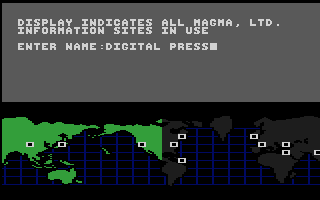
Q: You did one of my favorite games for the Atari 800 – Activision’s Hacker. Did Steve Cartwright (who did the original C-64 version) offer any advice, or help in porting it to the Apple and Atari computers? Was Hacker II ever planned for the Atari
David Lubar: Steve wasn't involved with the port. I never knew of any plans to port Hacker II. For that matter, until I read this I didn't even know there was a Hacker II.
Q: Ultima IV – I remember being really impressed with this (on the Atari). It was quite a quantum leap forward. How was it working with either Richard “Lord British” Garriott or Chuck “Chuckles” Bueche?
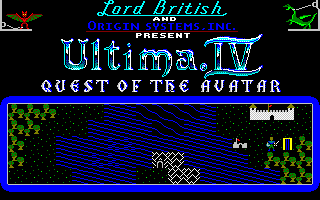 David Lubar: They are a great
group of guys. I worked more with Richard's brother, Robert Garriott, who handled a lot of the business stuff. But everyone at the company was great.
David Lubar: They are a great
group of guys. I worked more with Richard's brother, Robert Garriott, who handled a lot of the business stuff. But everyone at the company was great.
Q: Were the games that you wrote ones that were chosen or assigned?
David Lubar: At Sirius and Activision, I had a free hand. When I started freelancing, I did mostly ports.
Q: How was it adapting to programming for newer systems, after starting with the Apple II and the VCS? What were some of the easiest and hardest systems to program for? Which platform do you prefer?
David Lubar: The NES was pretty easy, since it was a 6502. Same for the SNES, since the 65816 was actually just a glorified 6502. The only hard part about the SNES was that it had so many capabilities that you had to do a lot of planning and really work out how the graphics would be organized. There are all sorts of combinations of the three backgrounds - various resolutions and priorities. There was one large space you shared with screen memory and character sets, all of which had to be laid out with certain boundary restrictions. I went through a lot of scratch paper when I did things on the SNES. But basically, after squeezing things down so much on the 2600, and living without sprites on the Apple, the newer systems were a breeze. I really liked the Game Boy once I learned Z80. I'd guess that the toughest system for me was anything that required a high-level language (except for something like LINGO, which is so much like BASIC). I just don't like programming in C++. I guess that makes me a throwback.
Q: You also have the distinction of your version of Frogger (for the SNES) being the last title ever released for that system!
David Lubar: I wasn't sure whether it was, but I had my suspicions. Not sure if that's an honor or a reminder that I'm a dinosaur.
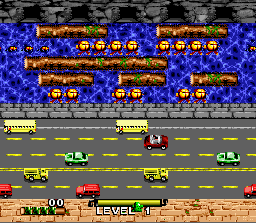 Q: Did you have a Frogger arcade machine to use for reference, when doing the Game Boy and SNES versions?
Q: Did you have a Frogger arcade machine to use for reference, when doing the Game Boy and SNES versions?
David Lubar: I played the Atari 800 version a lot and the coin-op a bit, and then just replicated what I saw. I didn’t use any code from any other versions.
Q: Are you still in contact with any fellow ex-programmers?
David Lubar: I still exchange cards with Mark Pelczarski during the holidays. I'll hear from some voice out of the past every once in a while.
Q: How was it working for companies like Sirius, Activision, and Atari? Any related stories/anecdotes from those days?
David Lubar: Like any job, there were good parts and bad parts. I enjoyed designing and programming. I tended to work too hard. But I met some amazing people. I remember one day at Sirius when I was working on code while a water balloon fight raged around me through the office. Somehow, none of the equipment got fried. In truth, I was such a workaholic that I missed most of the best anecdote opportunities. I skipped chance to go to one of Steve Wozniak's parties. Those who went came back with tales of llama rides and hot air balloons. And I missed out meeting Ted Nelson at an early West Coast computer fair. The next week, he told me he'd ended up hanging out with Robin Williams and Timothy Leary.
Q: For a time it seemed you got back into programming for the Apple II (and one game for the Atari 800), and later ended up working on Nintendo’s NES, Game Boy, and Super NES. Can you describe your career during this time, and why you left the video game industry?
David Lubar: I left the industry for two reasons. First, I've never been good at high level languages like C++. Second, I wanted to give as much time as possible to writing. I have eleven books out, including several story collections and some young adult novels that have received a lot of great reviews. But I haven't completely stopped programming. I recently started to do some web game work for Skyworks. It's in Lingo, which is a lot like BASIC. Garry Kitchen, who started Imagineering, runs the show. It's nice working with someone from the old days. He gives me a lot of freedom to design the game the way I want. Generally, they'll send me some art, mention a genre (e.g., make a space shoot-em-up), and let me do my thing.
Q: It seems a number of well-known Activision alumni work at Skyworks (David Crane, Alan Miller, Garry Kitchen). Do you guys ever swap stories from those days?
David Lubar: Garry is incredibly busy, but on those rare times when I catch him by phone we usually take a couple minutes to reminisce. That's always fun, because we jog each other's memories about all that hazy, distant stuff. Al Miller is a great guy, but I haven't talked with him in ages.
Q: I’ve spoken with a few other former Atari programmers who have gone into designing web-based games. Most say that their past work with writing VCS games is often helpful, as it’s a similar experience. Did you find that to be the case?
David Lubar: Definitely. While there are huge assets and lots of power in Director, there's also a need to keep the games both fun and simple. You want stuff that can be played intuitively. And you want stuff that doesn't take six weeks to load. At its core, a game is just sprites, backgrounds, and collisions. As you start to pile up bells and whistles, you lose the purity of play. The seductive danger of the web systems is that you can implement whatever comes to mind. It's very easy to start out with a simple concept and pile on too many enhancements. With the 2600, you couldn't act on every whim because there wasn't enough memory or graphics for that. In a way, it's very much like writing fiction. The beauty is as much a matter of what you decide to leave out as what you put in. The only real mandate for any game, whether on the 2600 or PC is that it should be fun. A game doesn't exist to show how smart or clever the programmer is. The purpose of a game is not to frustrate as many people as possible. My job is to make you glance from the screen to the clock to the waiting pile of work and say, "Just one more...."
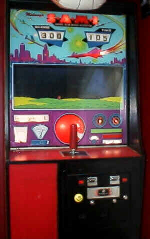
Q: What are/were some of your favorite games?
David Lubar: The first game I ever got hooked, way back in the early seventies was called SAMI (Surface to Air Missile Interceptor). This was before video games. It had planes moving along the back. You fired at them with a missile. It was all done with light, and it was very cool. You
had to lead the planes and time the shots.
On the 2600, I loved Frostbite and HERO; classic arcade: Eliminator, Berzerk, Dig Dug; Apple II: Sabotage, Lode Runner; NES: Section Z, Alpha Mission, Shadow of the Ninja, Tetris (brilliant in its simplicity); Sega Genesis: Sonic 1 and 2; SNES: Zelda (some of the best boss designs I've ever seen); Play Station: Tekken 2 and Bust a Move.
Q: What's your current project?
David Lubar: My latest book, Wizards of the Game, which involves fantasy gaming, just recently came out, and it’s already in it’s 2nd printing!
For more information about David Lubar's games and books, visit his website, at http://www.davidlubar.com/
| GAME | SYSTEM | COMPANY | STATUS |
| Battlesight | Apple II | Versa Computing | published |
| Bumper Blocks | Apple II | Creative Computing | published |
| Graphics Magician | Apple II | Penguin Software/Polarware | released |
| Hacker | Apple II | Activision | released |
| Killing Zone | Apple II | Versaware | released |
| Murder on the Mississippi | Apple II | Activision | unreleased |
| Obstacle Course | Apple II | Creative Computing | published |
| Plasmania | Apple II | Sirius Software | published |
| Shanghai | Apple II | Activision | unreleased |
| Special Effects | Apple II | Penguin Software/Polarware | released |
| Sub Battle Simulator | Apple II | Epyx | released |
| Bumper Bash | Atari VCS/2600 | Spectravideo | released |
| Fantastic Voyage | Atari VCS/2600 | Sirius/Fox | released |
| Flash Gordon | Atari VCS/2600 | Fox | released |
| My Golf | Atari VCS/2600 | HES (Imagineering, Inc.) | released |
| Nexar (The Challenge of) | Atari VCS/2600 | Spectravideo | released |
| River Raid II | Atari VCS/2600 | Activision | released |
| Sentinel | Atari VCS/2600, 7800 | Atari (Imagineering, Inc.) | released |
| SpaceMaster X-7 | Atari VCS/2600 | Sirius/Fox | released |
| Worm War I | Atari VCS/2600 | Sirius/Fox | released |
| M*A*S*H | Atari VCS/2600 | Sirius | unreleased |
| "skateboarding game" | Atari 7800 | Atari | not completed |
| "original game" | Atari 400/800 | Sirius/Fox | not completed |
| Cineman | Atari 400/800 | Sirius/Fox | unreleased |
| Fantastic Voyage | Atari 400/800 | Sirius/Fox | released |
| Hacker | Atari 400/800 | Activision | released |
| Master of the Lamps | Atari 400/800 | Origin Systems/Activision | released |
| Ogre | Atari 400/800 | Activision | released |
| Pastfinder | Atari 400/800 | Activision | released |
| Ultima IV | Atari 400/800, C-64 | Origin Systems | released |
| Pharaoh's Revenge | C-64 | SRI | releaesd |
| Shanghai | C-64 | Activision | released |
| Ultima I | C-64 | Origin Systems | released |
| Where in Time is Carmen Sandiego | C-64 | Broderbund | released |
| Frogger | Gameboy, SNES | Majesco | released |
| Frogger 2 | Gameboy | Majesco | released |
| Home Alone | Gameboy | T*HQ | released |
| Personal Organizer | Gameboy | Gametech | released |
| Super Breakout | Gameboy | Majesco | released |
| Swamp Thing | NES | Absolute Entertainment | released |
| Home Improvement | SNES | Absolute Entertainment | released |
| The Ren & Stimpy Show: The Time Warp | SNES | T*HQ | released |
| Super Battletank II | SNES | Absolute Entertainment | released |